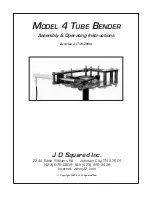
The stance function (standing mode) is a functional supplement to the basic mode (mode 1). This function makes it
easier, for example, to stand on an inclined surface for a longer time. The joint is fixed in the flexion direction.
This function must be enabled in the adjustment software. Once the function is enabled, you can also choose
between an intuitive and a conscious lock.
Intuitive locking of the joint
The intuitive stance function recognises any situation that puts strain on the prosthesis in the flexion direction but
where flexion is not permitted. Examples of this include standing on uneven or sloping surfaces. The knee joint is
always locked in the flexion direction when the prosthetic leg is not fully extended, under some amount of load and
at rest. Upon forward or backward rollover or extension, the level of resistance is immediately reduced to stance
phase resistance again.
The knee joint is not locked when the above conditions are met and a sitting position is assumed (for example while
driving).
Deliberate locking of the joint
1) Assume the desired knee angle.
2) Do not remove the entire load from the prosthesis.
3) Do not change the knee angle for a brief period (1/8 second). This time period prevents unintentional activation
of the standing function.
→
The blocked joint can now be fully loaded in the flexion direction.
Deliberate unlocking of the joint
►
By deliberately extending or unloading the knee joint, is it unlocked again.
9.1.2 Walking
Initial attempts at walking with the prosthesis always require the instruction of trained, quali
fied personnel.
The hydraulics stabilise the knee joint in the stance phase and release the knee joint in the
swing phase so that the leg can swing forward freely.
Switching to the swing phase requires that the prosthesis roll over to the front out of the
stride position.
9.1.3 Running short distances ("walk-to-run" function)
For covering short distances quickly, the knee joint detects a transition from walking to run
ning in basic mode and automatically changes the following settings:
•
The swing phase angle is increased
•
Preflexion of 4° at heel strike (PreFlex) is reduced to 0°
The requirements to automatically switch to the running motion are fast forward movement of
the prosthetic leg and high dynamic load on the knee joint. When stopping from the running
motion, the changed settings are set back to the standard values.
9.1.4 Sitting down
The resistance in the prosthetic knee joint while sitting down ensures evenly bending into the
sitting position.
Either a constant resistance or a continuously increasing resistance for sitting down can be
configured using the adjustment software.
1) Position both feet side by side at the same level.
2) While sitting down, the user should distribute his/her weight evenly between both legs
and use arm supports, if available.
3) Move the buttocks in the direction of the back support and lean the upper body forward.
INFORMATION: Resistance while sitting down can be changed with the Cockpit app
via the parameter "Resistance" (see Page 94)
.
90
Use
Summary of Contents for 3B1-2/3B1-2-ST
Page 62: ...62 ...
Page 115: ...115 ...
















































